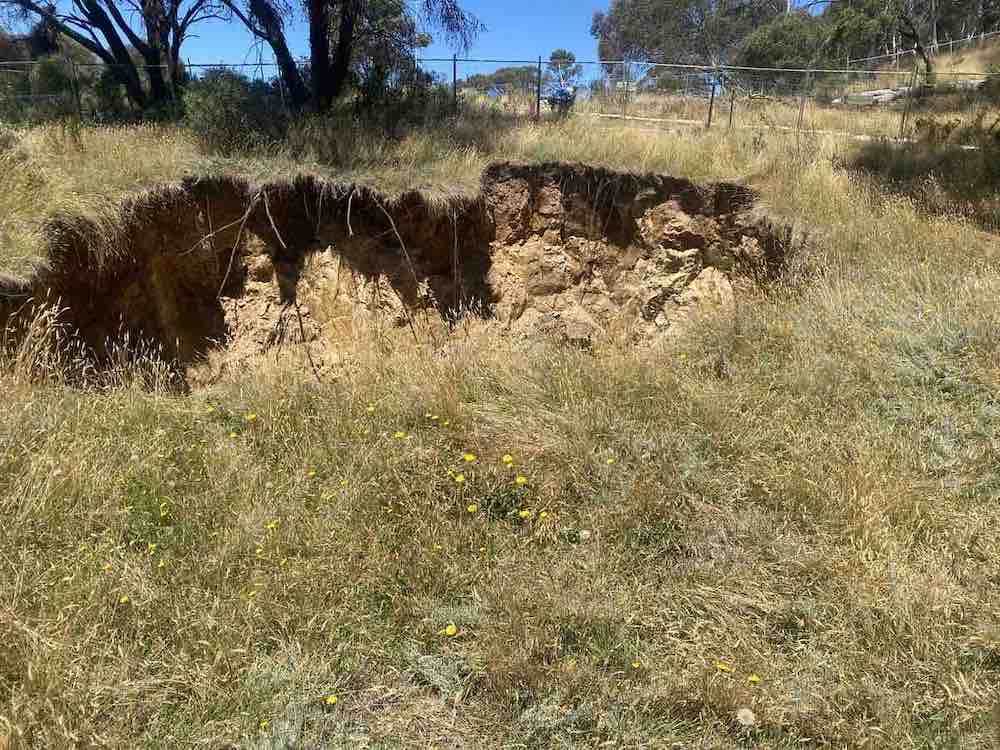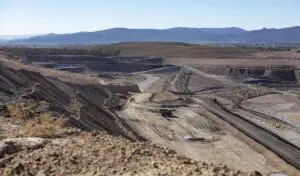Snowy Hydro executives have finally given public confirmation that the company’s massive pumped hydro project Snowy 2.0 has fallen another year behind schedule, with its completion date now pushed out to December 2027 amid a halt in its efforts to dig a 27km tunnel.
Speaking at a Senate Estimates hearing in Canberra on Monday, the company’s newly appointed CEO, Dennis Barnes, said the readjusted timeline for the project, reported here last week, came from a combination of delays across five major work fronts.
Barnes, on board at Snowy Hydro for just one week having come over from Contact Energy in New Zealand, takes over leadership of the government-owned utility at a very challenging time.
The company’s two major grid-building projects, Snowy 2.0 and the Hunter Power Project – a gas and (hypothetically) hydrogen power plant in Kurri Kurri – each have their own set of problems that continue to delay their progress, swell their budgets, and generate unwanted political heat and media attention.
Snowy 2.0, in particular, has had more than its fair share of troubles, recently including the collapse one of its main contractors, Clough Engineering and a reported $2 billion blow-out in costs – already inflated to $5.9 billion.
The huge pumped hydro project’s most pressing current dilemma, however, involves what Snowy Hydro describes as the “paused” boring machine called Florence, and an uncooperative area of “soft ground.”
As Ted Woodley points out here this week, the progress of all three of the project’s tunnel boring machines (TBMs) appears to have been “staggeringly slow.”
But the poor progress of Florence has had the most attention due to the length of time she has been “paused” – as Snowy management continues to put it – and due to the appearance of a sink hole (“surface depression”) on her tunneling route.
Pauline Hanson’s One Nation Senator Malcolm Roberts on Monday was keen to get an update on Florence, having attended to the previous Senate Estimates grilling of Snowy Hydro in November of last year.
“The media has shown photos of a hole that’s appeared above the excavation. Is that true and, if so, what are the implications for the project?” he asked Barnes.
“That’s true, Senator. We’ve been quite open about that. We put out a press statement in relation to that before Christmas.
“There’s a surface depression, or hole, if you like, and we’re working through that carefully so that the tunnel boring machine doesn’t become bogged, [using] the terminology that you used.”
soooo, i visited the #SnowySinkHole yesterday.
the second most surprising thing is how close it is to the tunnel entrance. florence must be only ~200m into her 17km journey, which she was expected to complete in 2023Q3.
the most surprising thing… pic.twitter.com/77eiObL1XR
— 💧simon holmes à court (@simonahac) February 12, 2023
Barnes prefers the term “paused” to explain what’s going on with Florence, telling Senate Estimates that it’s not necessarily that particular issue that has caused the latest delay to the project.
“There’s five major work fronts, so the critical path will move around as the project progresses, or until we get the machine ready for un-pausing,” Barnes told the Committee on Monday.
“We wouldn’t say that it will delay the whole project.”
But Barnes also noted that it wasn’t really safe to say whether the project was on track for 2027, even, until the works progress into the excavation of the cabin – “and we expect to be at that point in the first quarter of 2024,” he said.
On the Hunter Power Project in Kurri Kurri, the Snowy Hydro team was again quizzed about when, and at what proportion, green hydrogen would become part of the new gas plant’s fuel mix.
As RenewEconomy has reported, the controversial $600 million, 660MW Kurri Kurri project, which got its start under the Morrison Coalition government, was kept alive by Labor on the condition it is built “hydrogen ready.”
Originally, Labor said it intended for the gas plant to run on 30 per cent green hydrogen from the get-go, and work its way up to 100 per cent renewable supply by 2030, in line with the party’s newly legislated energy targets.
To achieve this, the Albanese government pledged to tip a further $700 million into the project and the plant was expected to achieve first power generation at the end of 2023.
In November, however, we heard that the plant will start out using fossil gas only, and that moving to just 15 per cent green hydrogen would be subject to construction delays – due to flooding – and to the availability of the zero emissions fuel.
What we heard this week was that the start date for the plant would now be December 2024, and that federal Labor has requested a business case from Snowy on what would be required – in addition to the $700 million in government funds already committed – to meet its election commitment of 30% hydrogen on commencement.
Nationals Senator Ross Cadell was not impressed.
“On the evidence today, from day one in December [2024], it will not be burning 30% [green hydrogen],” he said, before asking whether it was possible the added costs of getting the plant hydrogen ready by the forecast date could reach $1.5 billion.
“Is it possible it could get that high?” he asked.
“Senator, the election commitment the government made was to provide $700 million in equity to get up to 30% Hydrogen,” said the Treasury department’s Simon Duggan, in response.
“We’re not yet in a position where we’ve got a business case which would say that we would need to deviate from that estimate at this point.”










